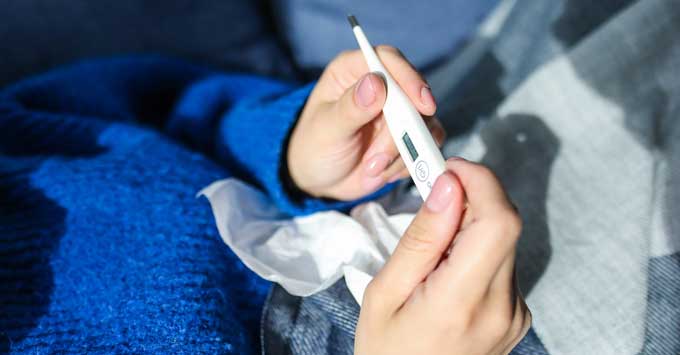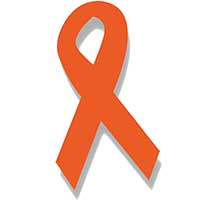Last Updated on November 29, 2023 by Cathy

Influenza (the flu) and the coronavirus are viral infections that attack the respiratory system. They are highly contagious spreading quickly through communities. Vitamin D helps to fight viruses! Oftentimes, people with respiratory diseases also have a low vitamin D level. – For a virus to thrive it needs a host, like humans.
During the flu pandemic of 1918, an estimated 50 million people worldwide died. That was about 1/4 of the world’s population at the time. Hospitals needed to set up temporary tents outdoors from the overflow of patients.
Nurses would take the patients in the tents outdoors to get fresh air and sunshine. Doctors began to notice the patients outdoors recovered better than the patients indoors. Research now shows that outdoor air is like a disinfectant. It can kill the flu virus and other harmful bacteria. One study found vitamin D improves immunity by strengthening the mucus membranes.
A huge study in 2017 looked into vitamin D and respiratory illnesses. They found vitamin D cuts the risk of respiratory infections caused by viruses in half.
Viruses enter the body through mucus membranes which include:
- Eyes
- Lungs
- Mouth
- Nose
- Urinary tract
According to the U.S. Library of Medicine:
While vaccines are absolutely essential for control of influenza, they are not always effective in eliminating influenza cases, and the associated risk of secondary respiratory infections, especially among older adults…
vitamin D supplements or fortifying commonly consumed foods with higher amounts of vitamin D should be evaluated further as a possibly useful component of a comprehensive, vaccine-centered, program to reduce influenza mortality rates, both in pandemics and seasonal influenza, especially in the elderly.
Study after study shows that vitamin D helps to stop upper respiratory viruses. COVID-19 is new so there haven’t been any studies on how vitamin D could benefit. However, there are studies proving vitamin D benefits against viral influenza infections.

Vitamin D and Multiple Sclerosis
Vitamin D is actually a steroid hormone that impacts our entire immune system. Having a vitamin D deficiency is a risk factor for multiple sclerosis (MS). The further away a person lives from the equator the higher the risk.
Unfortunately, neurologists don’t test patients to find out what their vitamin D level is. It is up to you to get tested. Ask your doctor for a ‘Vitamin D, 25 Hydroxy’ test. This will measure the amount of vitamin D is in your body.
Vitamin D deficiency can cause:
- Autoimmune diseases such as MS
- Cancer
- Diabetes (type 1 and 2)
- Heart disease
- Menopause symptoms (hot flashes, night sweats, etc.)
- Obesity
- Osteoporosis
It is crucial to get your vitamin D level into the normal range. It should be between 60-80 ng/mL or 150-200 nmol/L. You can even go as high as 100 ng/mL or 250 nmol/L.
If your doctor won’t have you tested, you can also use online labs like Walk-In Lab or Health Testing Centers. First, you order your test online then go to a local lab like LabCorp for the blood draw. A few days later they will email your test results.
My first blood test was through my family doctor who told me my vitamin D level was “normal.” When I asked for the actual number I had a very low level (as you can see in the image below). Always ask for the actual number.

How much vitamin D3 should I take?
Everyone is different so the amount of vitamin D3 you take will also be different. Dr. Coimbra, a neurologist from Brazil, recommends 10,000 IUs of vitamin D each day for MS patients. He has a protocol that uses high doses of vitamin D to stop the progression of MS.
It’s not unusual to see a person on the Coimbra protocol to take vitamin D as high as 120,000 IUs each day. Patients also have their blood tested often to achieve the most benefits.
It’s very important to not take more than 10,000 IUs of vitamin D each day without a doctor who specializes in high doses.
According to the U.S. Library of Medicine:
The Institute of Medicine recommendation for adults younger than 70 years of age is 600 IU of vitamin D daily. We are told that this would achieve a level of 50 nmol/L in greater than 97.5% of individuals. Regrettably, a statistical error has resulted in erroneous recommendations by the Institute of Medicine leading to this conclusion and it might actually take 8800 IU of vitamin D to achieve this level in 97.5% of the population. This is a serious public health blunder.
Where do I get vitamin D?

Vitamin D is also called the sunshine vitamin and for a very good reason. Your skin absorbs most of your vitamin D from the sun. Although you don’t want to get a sunburn, it is important to get as little as 15 minutes of sun each day. Either in the morning or in the evening when the sun isn’t directly overhead.
For most people, it’s impossible to see the sun every day, year-round. Especially if they live further away from the equator. Also, during colder months when it’s cloudy. You should take a high-quality vitamin D supplement. My functional medicine doctor recommended Vitamin D/K2 by Throne Research.
There are two kinds of vitamin D – vitamin D2 and vitamin D3. Vitamin D2 comes from plants and vitamin D3 comes from the sun and animals.
Foods high in vitamin D:
- Beef liver
- Egg yolk
- Fatty fish (mackerel, salmon, sardines, trout, tuna, etc.)
- Mushrooms (avoid if you have a yeast overgrowth)
Vitamin D is a fat-soluble vitamin. Meaning, your body absorbs vitamin D with fats, not water. So, it’s best to take vitamin D with food that is higher in fats. Fat-soluble vitamins stay in your body and can last a long time. Unlike water-soluble vitamins which aren’t stored.
What if I get sick?

According to Dr. Gerry Schwalfenberg on the U.S. Library of Medicine’s website:
A colleague of mine and I have introduced vitamin D at doses that have achieved greater than 100 nmol/L in most of our patients for the past number of years, and we now see very few patients in our clinics with the flu or influenza like illness. In those patients who do have influenza, we have treated them with the vitamin D hammer, as coined by my colleague. This is a 1-time 50,000 IU dose of vitamin D3 or 10,000 IU 3 times daily for 2 to 3 days. The results are dramatic, with complete resolution of symptoms in 48 to 72 hours. One-time doses of vitamin D at this level have been used safely and have never been shown to be toxic.
Influenza and COVID-19 target elderly people. This could be because as people age their vitamin D level drops.
Vitamin D Side Effects
Some medications can interfere with vitamin D absorption. If you are on medication talk to your doctor before you start taking vitamin D. Some people feel pain after taking a higher dose of vitamin D like 10,000 IUs each day. If you do feel pain, reduce your dose even if it’s only 800 IUs each day. After 2-3 weeks slowly increase your dose.
If you start feeling pain from vitamin D, you may be deficient in magnesium.
Vitamin D Helps to Fight Viruses!

Free Wellness Library!
Subscribe for free and I’ll send you the password to my secret library filled with many printables for your wellness journey.
Want to remember how vitamin D helps to fight viruses?
Pin this to your favorite Pinterest board!


Resources for Vitamin D Helps to Fight Viruses:
https://www.sciencedaily.com/releases/2017/02/170216110002.htm
https://www.mdpi.com/2072-6643/12/4/988
https://www.bmj.com/content/356/bmj.i6583
https://www.ncbi.nlm.nih.gov/pmc/articles/PMC2835877/#idm140450097073616title





